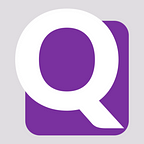THE FUTURE OF CLASSROOMS — A BLENDED APPROACH.
One of the objectives laid out in the NEP 2020 is the need for Blended models of learning. The value of face-to-face in-person learning is fully recognized while supporting digital learning and education. As a result, effective blended learning models are now necessary for today’s rapidly changing classroom environment.
What is Blended Learning?
Blended learning incorporates the best of two training environments: classic face-to-face classroom instruction with cutting-edge eLearning. By covering both bases, you can engage all sorts of learners: those who learn best in a structured setting with face-to-face interaction with an instructor, and those who learn best with semi-autonomous, computer-based instruction.
While the classroom allows for role-playing and immediate face-to-face feedback, online learning provides personalized, self-paced learning with eLearning/mLearning components that lend themselves to interactive media such as skill-building, games, videos, tutorials, quizzes, and social media components, all of which are accessible from the learner’s smartphone or tablet.
Tools to Implement Blended Learning in your institution:
- Communication.
Since education is essentially a form of communication. The teaching/communication process will function best when the instructor has a solid communication rapport with a student. Communication is important whether it is a teacher to student, student to student, teacher to teacher, teacher to parent, teacher to admin or admin to parent, or vice versa.
Many ICT technologies are available to improve communication with students, teachers, parents, and resource people. Digital tools like inbuilt timetables help with an offline-online continuum of classes.
2. A Flipped Learning Environment.
The phrase “flipped classroom” has recently gained popularity in higher education. The most common definition of a flipped class is a teaching method in which activities that were formerly undertaken outside of class as homework are now performed in class during teaching time. According to numerous definitions and models, this entails pupils seeing a video of pre-recorded lectures prior to class. When students come to class, they work on tasks or activities with their classmates and the instructor.
Bergmann and Sams explains, “Ultimately, flipping a classroom involves shifting the energy away from the instructor and toward the students and then leveraging educational tools to enhance the learning environment.”
Flipping can imply more than just watching lecture videos. It is also possible to characterize it as a change from individual to collaborative techniques. Activities such as quizzes, worksheets, reflective writing prompts, and problem-solving tasks can be used to flip a class.
To enhance the online classroom experience, digital technologies like dynamic polls and multiuser whiteboards may be utilized to collaborate and engage with students, bringing it closer to a real classroom.
3. Formative assessment tools.
Formative assessment tools are an excellent approach to monitor the progress of your blended learning program and the performance of your students. Specific examples include how assignments are submitted, surveys or polls are conducted, and examinations are given.
Most edTechs should provide some fundamental features like proctored exams, dashboards, and reports to track and monitor the course progression across the Institute.
4. Mix your classroom up into a digital playground.
Today, our students are always on the go. Stick them in one place in front of one thing for too long and they get bored. They need entertainment, stimulation, and variety.
Reading the book or attending lectures might be off-putting to students who have grown up in a digital era where they frequently flip from youtube to Twitter to Instagram to clubhouse to keep their minds stimulated. Movement and excitement will undoubtedly keep your students interested and contribute to blended learning success. Change things up and try out new ways to learn in and out of the classroom. The only limitation to the class environment you create is your own imagination (and budget, of course).
Tools that provide videos, pdfs, and podcasts on your e-books allow students to access material in the form of text, video, ppts, pdfs, and audio in one location without having to switch applications while studying is not only convenient but also minimizes distractions.
Quiklrn focuses on adapting to every learner. We provide features that help to create adaptive content packs aligned to desired learning outcomes.
To know more visit us at https://home.quiklrn.com/detailed-page/.
-Saloni Jindal.
